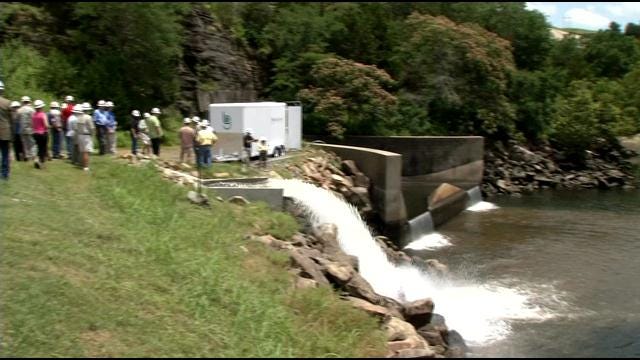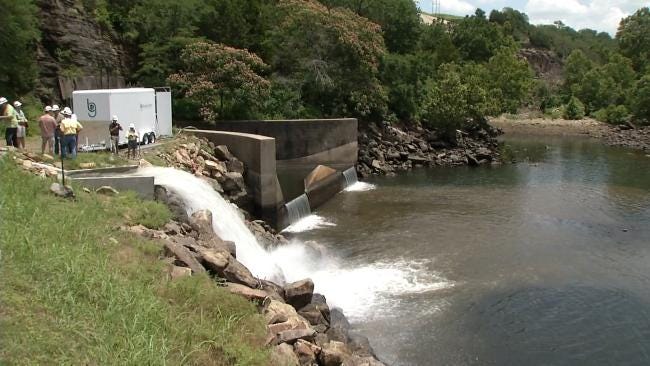Lowering Water Temperature In Lake Tenkiller Helps Fish Thrive
Gore is known as the trout capital of Oklahoma, but two years ago, water levels dropped so low, thousands of fish were dying below the dam.Wednesday, June 19th 2013, 7:09 pm
Much of the money that flows into the economy of the little town of Gore is directly linked to the water that flows through Tenkiller Dam.
Gore is known as the trout capital of Oklahoma, but two years ago, water levels dropped so low, thousands of fish were dying below the dam.
Right now, cold, oxygen-filled water is being released into the lower half of the Illinois River, but the problem is when it gets hot and dry this summer, and the Tenkiller Dam can't do releases like this every day.
"The water temperature spiked so much the fish were literally suffocating," said Scott Hood, with Trout Unlimited. "Thousands and thousands of paddle fish and trout that were in here, all of them perished in a couple days."
Hood said that event back in 2011 happened after a leak in the dam was fixed, shutting off the flow.
To compensate, donated water was used, but even it became scarce when the level of Lake Tenkiller dropped.
10/10/2011 Related Story: Anglers Worried Low Water Level At Lake Tenkiller Harmful To Fish
"We needed another solution," said Col. Mike Teague, with the Army Corps of Engineers.
Teague said that solution was an 18-inch pipe running from the dam's overflow tank to the waters below, and with it, a machine called a SDOX, which will infuse high levels of oxygen into the water.
"This is when you're not generating, how do you get the water that you've got to make the best quality that you can?" Teague said.
He said, before, they were wasting thousands of gallons of valuable water using a gate.
"You can't control it, it's opening the garage door when you want to let your dog out," Teague said.
Teague said the new system is more precise, not only in how much it lets out, but also in measuring the oxygen and temperature levels in the water.
"The hotter the water, the lower the oxygen level," Teague said.
Hood said 55 degrees is the perfect temperature for the fish to thrive, and thinks this new system will make that possible all along the six-mile stretch of the Illinois River.
The Army Corps of Engineers says this is an interim solution, but one that should last a few years. The next step is re-allocation, so that water is constantly running to the Illinois River.
More Like This
June 19th, 2013
January 2nd, 2025
September 29th, 2024
Top Headlines
May 5th, 2025
May 5th, 2025











